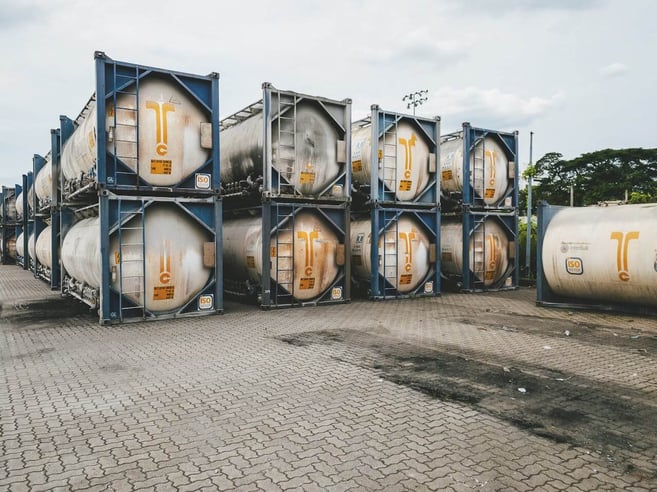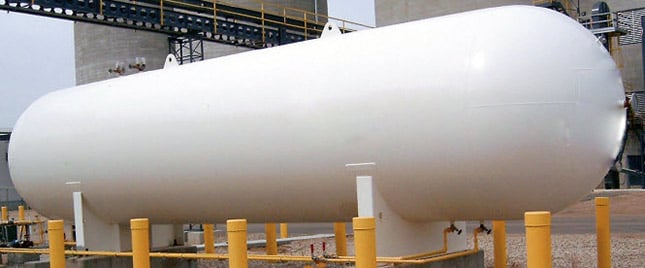There are several different types of fuel storage tanks, and choosing the right one can be daunting. However, the first step is comparing single-wall fuel tanks to double-wall fuel tanks.
Safety is the key issue when it comes to fuel storage. Protecting people and the environment from the possible dangers of toxic and highly combustible substances is essential. Your fuel tank itself should also be cost-effective, functional, and durable.
T BAILEY LLC is a leading fabricator of tanks for storing all manner of substances, from hazardous chemicals to water.
The Difference Between Single Wall and Double Wall Tanks
Single-wall tanks only have one shell encasing the fuel, whereas double-wall tanks have an inner shell surrounded by a second, larger containment shell.
Every fuel tank requires secondary containment to prevent fuel from entering the environment. This safety feature must be built into the storage site for a single-wall tank, as it’s not in the wall fuel tank itself. This is called external bunding. Specialist civil engineering is necessary for this construction.
A double-wall tank has an interstitial space between the two walls that fulfills the function of secondary containment in the event of leakage. No external containment safety feature is required in the storage site. For this reason, a double-wall tank is referred to as a self-bunded tank—essentially, it’s a tank within a tank.
Single-wall vs. Double-Wall Fuel Tanks differ in terms of storage and safety. Double-wall tanks are safer than single-wall tanks and are also suitable for transporting fuel.
Advantages: Single Wall Fuel Tank
Single-wall tanks require an epoxy-coated concrete dike, which is a concrete structure for secondary containment to comply with the Environmental Protection Agency’s (EPA) Spill Prevention, Control, and Countermeasure Plan (SPCC). (Exceptions are diked tanks that have built-in integral steel dikes.)
If you have a concrete dike, then a single wall tank offers the following benefits:
- Affordability: Single wall tanks are substantially cheaper than double wall tanks—they cost about a third of the price.
- Convenience: They have a smaller volume and footprint than double wall tanks of the same capacity.
- Flexibility: Some single wall tanks can be divided into compartments to accommodate different fuel products.
- Weather Resistance: Advanced coating systems can be added to outdoor tanks to protect against the elements.
Advantages: Double Wall Fuel Tank
Double-wall fuel tanks are more expensive but offer several advantages. This type of tank will be your safest and most reliable choice, due to:
- Automatic EPA compliance: Your tank meets the EPA requirement for secondary containment provided that:
- It is shop-fabricated.
- The inner tank is a Underwriter Laboratories (UL)-listed steel tank.
- It has an overfill alarm and flow shut-off.
(Note that tanks that are double-walled for fire rating purposes have insulation in the interstitial space and therefore may not be EPA compliant in terms of secondary containment.)
- Leak monitoring: A sensor monitors the vacuum between the shells. Loss of vacuum indicates a leak.
- Weather resistance: The outer wall protects the contents from weather conditions. Specialized exterior coatings can also provide extra protection.
- Purposes: They are very versatile and have a wide range of applications.
Uses and Designs of Double Wall Fuel Tanks

Double wall fuel storage tanks can be any size, vertical or horizontal, aboveground storage tanks or underground. They can hold diesel, gasoline, kerosene, etc.
T BAILEY offers several options:
1. Fireguard® Tank: Insulation between the walls protects fuel from ambient temperature variations and exceeds the UL 2-hour fire test.
2. Flameshield® Tank: Registered Steel Tank Institute tank with a 2-hour 2,000〇 fire rating for fire resistance.
3. Contain-A-Tank: A cylindrical primary tank and integrated rectangular outer tank are SPCC compliant for secondary containment.
4. UL142/F921 Tank: Registered Steel Tank Institute tank that meets UL142 Standard for Steel Aboveground Tanks for Flammable and Combustible liquids.
Single Wall vs. Double Wall – Which Should I Get?
Consider getting a single wall tank if:
- You have a tight budget and a pre-existing secondary containment area.
- You have limited space and need a smaller tank.
- You require a compartmentalized tank for store different products.
- You’re in a jurisdiction that isn’t subject to EPA’s SPCC regulations. (Check your local applicable legislation.)
Consider getting a double-wall fuel tank if:
- You don’t have a secondary containment area or building space.
- You want a hassle-free way to comply with EPA's SPCC regulations.
- You want a durable outdoor tank that can resist adverse weather conditions.
- You want to reduce the chance of leaks occurring if the tank gets damaged.
- You want an externally visible vacuum gauge that can detect leaks.
Double Wall Oil Tanks to Single Wall Fuel Tanks - T BAILEY's Steel

Now that you’ve considered your unique situation and weighed up single-wall versus double-wall fuel tanks, you’ll want to partner with a company that specializes in fabricating all manner of tanks. T BAILEY will specifically engineer your tank to meet your requirements, ensure compliance, and withstand any environmental conditions.
Whether one metal layer on your tank is small or enormous, our heavy steel fabrication shop can make it and our coatings division can prepare it to store any fuel product. Call us today!






